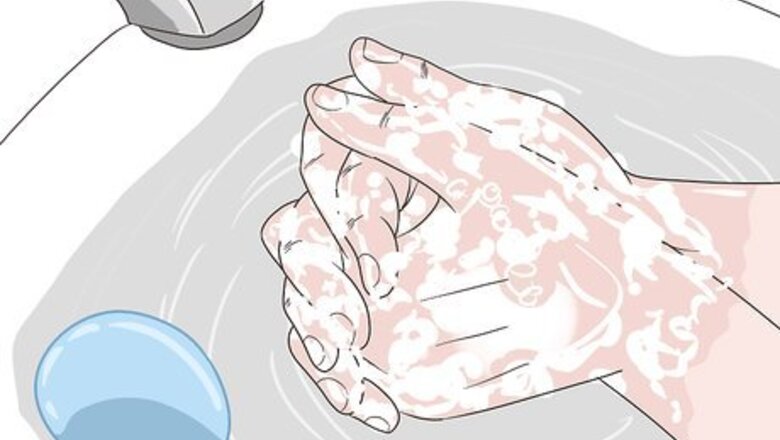
views
X
Research source
Removing Glass with Tweezers
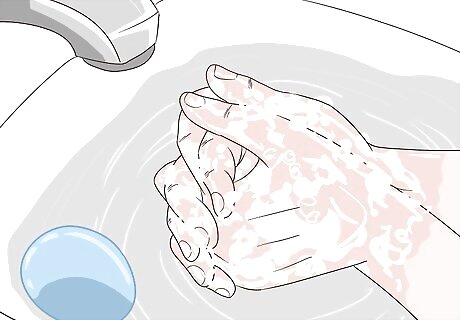
Wash your hands and the area with mild soap and warm water. Wet your hands and then lather soap between your hands for 20 seconds. Rinse the soap away completely and dry them with a clean dry towel. Next, hold the wound under lukewarm running water. Apply a small amount of mild soap around the edges of the wound using your fingertips. Hold the wound under running water again and rinse away the soap. Don’t scrub the wound as this may embed the glass deeper. Only let the water run over it. Don’t apply the soap directly to the wound. Doing this may cause irritation. Apply it around the edges of the wound only.
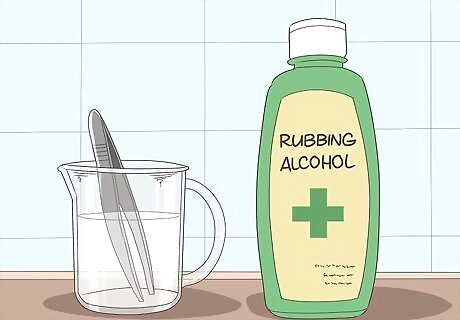
Sterilize a pair of tweezers by dipping them in rubbing alcohol. Fill a small cup with rubbing alcohol and dip a pair of tweezers into the cup to sterilize them. Make sure to fully submerge the ends of the tweezers in the alcohol. You may leave them in the cup for a few minutes, or just quickly dip them in. Then, remove the tweezers and place them on a clean paper towel to dry. Rubbing alcohol dries quickly, so the tweezers will be ready to use within a few minutes of taking them out of the rubbing alcohol. If you don't have rubbing alcohol, you can also place the tweezers into a pot of boiling water for 10 minutes. Remove the tweezers with tongs and place them on a clean, dry towel to dry.
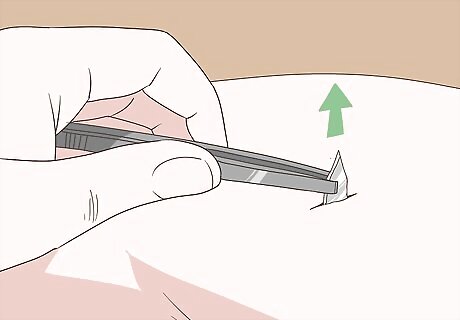
Grasp the glass with the tweezers and pull. Identify the end of the glass shard. If it’s small, try using a magnifying glass to help you spot it. Once you identify the end of the shard, grasp it with a pair of tweezers. Then, pull the glass shard out of the skin in the direction that it entered. Avoid pulling it in another direction as this may worsen the wound. Discard the glass shard in a garbage can after you remove it. Don't apply too much pressure to the glass shard or you may crush it into smaller pieces. You may need to repeat this process if you have multiple shards of glass embedded in your skin.Tip: If you don't have a steady hand or cannot access the glass easily, ask a friend to remove the glass.
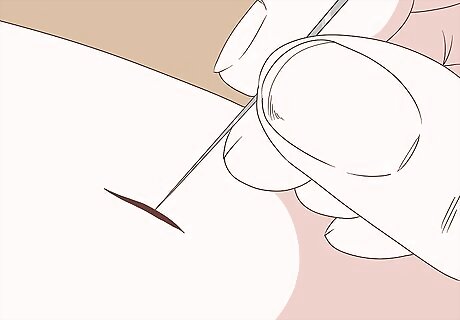
Puncture the skin with a sterilized needle if the glass is fully embedded. If the glass is fully embedded underneath your skin, you won’t be able to access it with tweezers. Dip a needle in rubbing alcohol to sterilize it. Then, insert the tip of the needle under your skin where the glass is embedded. This will break the surface of the skin and allow you to grasp the glass and remove it with tweezers. Don’t attempt this if the glass is deeply embedded. Only try to break the skin with a needle if the glass shard is just under the surface and covered by a thin layer of skin. If it’s deeply embedded or if you cannot break the skin easily, seek medical assistance to remove the shard. Buck Tilton Buck Tilton, Wilderness Medicine Expert Attempting to remove deeply embedded glass can cause more harm. For minor wounds, rinse the area with clean water and use tweezers to gently grasp glass fragments near the surface. Cover with a sterile bandage. For large or deeply penetrating glass, seek medical care. Professionals can numb the area, thoroughly irrigate, visualize with imaging, and remove fragments while minimizing further injury.
Caring for the Wound after Glass Removal
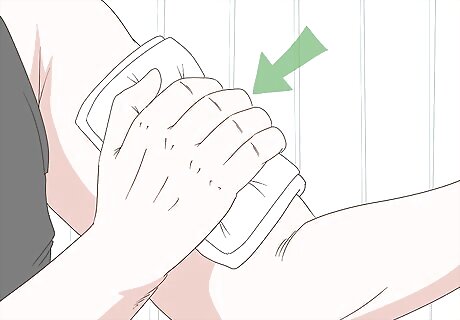
Apply pressure to the wound if it’s spurting blood or bleeding heavily. Use a piece of cotton gauze or a clean, dry towel to apply pressure to the wound after you remove the glass shard. Hold the gauze or towel firmly against the wound for 10 minutes. Then, remove the gauze or towel to check the wound. If it’s still bleeding, continue to apply pressure and seek immediate medical attention. If the wound soaks through a bandage over the course of 1 hour, then this is also a reason to seek medical attention.
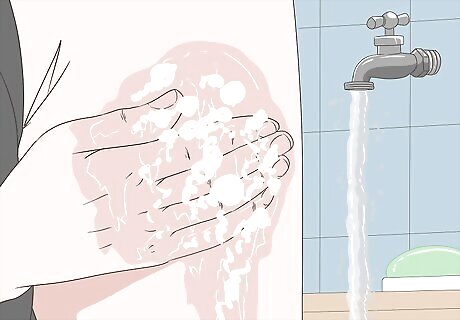
Wash the area with soap and warm water and your hands again. Once you have finished removing the glass shard, wash the wound again. Hold the wound under warm, running water and then apply a small amount of mild soap around the edges of the wound. Rinse the soap away completely. Then, pat the wound dry with a clean, dry towel or paper towel. Finish by washing your hands with soap and warm water again, too. To time yourself while washing your hands, try humming the happy birthday song 2 times. This will help to ensure that you wash your hands for the full time required to get them clean.
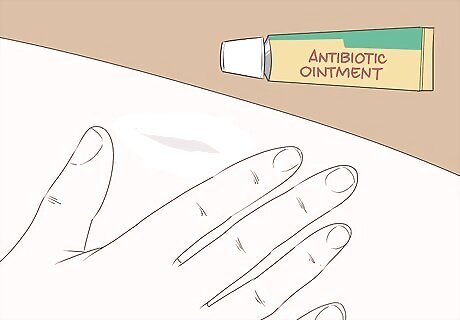
Apply an antibiotic ointment to the wound to protect against infection. An antibiotic ointment may help to prevent an infection from developing after you remove the glass from the wound. Use your fingertips to apply a thin layer of antibiotic ointment to the wound after you finish cleaning it. You can purchase antibiotic ointment for wound care in the first aid section of drug and grocery stores.
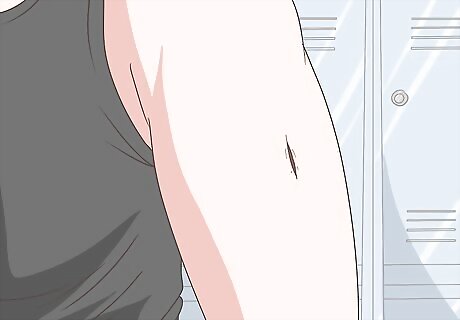
Leave the wound uncovered unless it may get irritated or dirty. If the wound is in an area that does not usually come into contact with clothing or surfaces, leave it uncovered. This may help to promote faster healing. However, if the wound is someplace that will be up against your clothes or on a part of your body that frequently touches other surfaces, such as your foot or hand, it’s best to cover it. If you decide to cover the wound, place a bandage over it that is large enough to cover it completely. You can use a piece of gauze and medical tape or a band-aid.
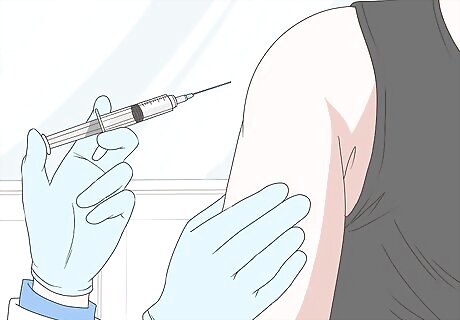
Get a tetanus shot if you haven’t had one in 5 or more years. Tetanus is a serious, potentially fatal illness that can result from puncture wounds. If you haven’t gotten a tetanus shot within the last 5 years, make an appointment with your doctor to get one as soon as possible.Tip: Stay up to date on your immunizations so that you won’t have to worry as much if you get injured. Go for regular checkups and get a tetanus shot once every 5 years or as recommended by your doctor.
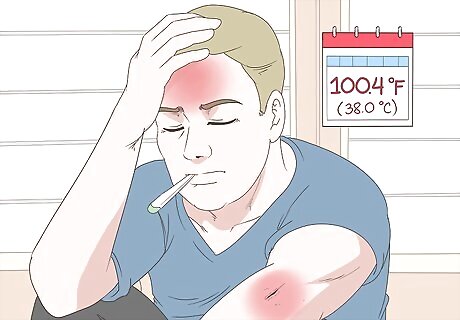
Watch for signs of an infection following glass removal. If you notice any signs of an infection after you remove a shard of glass from your body, go to an emergency room for immediate treatment. An infection will usually develop within the first few days after getting injured. Signs of an infection may include: Pus, pain, tenderness, swelling, or redness Fever of 100.4 °F (38.0 °C) or higher Red streaks extending from the wound
Knowing When to Seek Medical Assistance
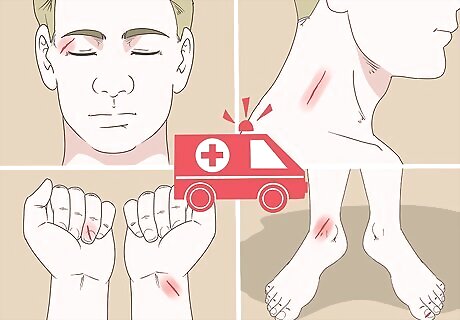
Seek immediate medical attention for glass lodged in a sensitive area. If the glass is lodged somewhere on your body that is more delicate or sensitive, then you may want to seek medical attention to remove the glass. This will make removing the glass safer and less painful. Seek medical attention for glass that’s lodged in your: Face, especially the eyes Neck Joint, such as on the hand, wrist, or foot Fingernails or toenails
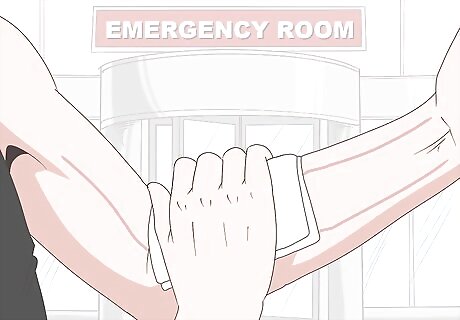
Go to the ER immediately if there’s a chance you injured a major artery. If you have pulsing or spurting blood flow, that could mean that you’ve injured a major artery, depending on the location of the wound. Call 911 (or the emergency number for your country) immediately and apply direct pressure to the wound with gauze. If you bleed through a bandage, don’t remove it. Just add another bandage on top.
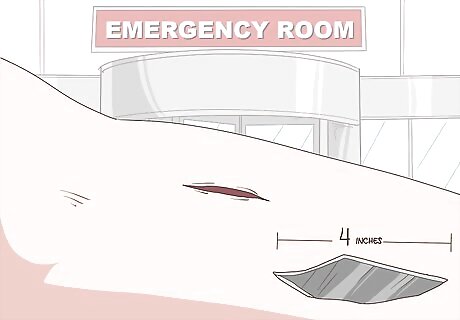
Go to the nearest emergency department for other special circumstances. Although you can usually get a small glass splinter out at home, some situations will require medical attention. Seek immediate medical help if: The glass shard is large, such as greater than 4 in (10 cm) long The glass is lodged deep in the skin or in muscle The glass doesn’t come out easily The injured area or the area below it on an extremity feels numb
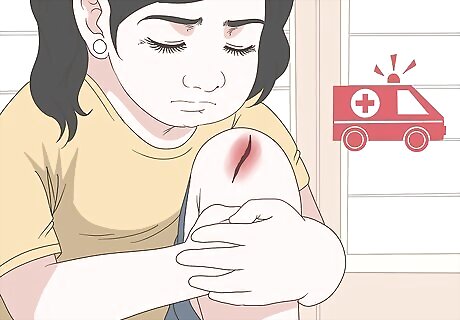
Take a child to the emergency room for glass shard removal of any kind. It can be difficult to remove glass from a child's wound because they have a much lower tolerance for pain. Children may also move around and cause themselves further injury during the removal process. This is why it is best to have the glass removed by a doctor or other medical professional. Seeking medical assistance right away will make the process safer and easier for the child. The doctor can apply a topical anesthetic to numb the area where the glass shard is embedded and this will make it easier on the child while the doctor removes the glass. Tip: Ensure that the child does not pick at the wound or try to remove the glass themselves on the way to the hospital. Try distracting them with their favorite game, book, toy, or cartoon.
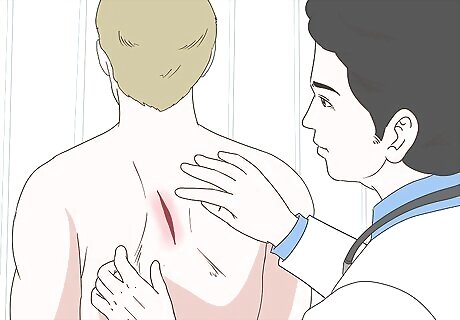
See a doctor if you cannot remove the glass on your own. Sometimes when you try to remove glass at home, it can break into smaller pieces and fragment within your skin. If this happens or if you cannot remove a glass shard for any other reason, go to the nearest emergency department right away. For example, if you pulled out a few glass shards from a wound, but there are still several small fragments embedded in the skin, seek medical attention.
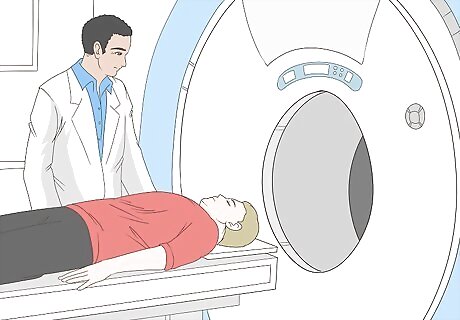
Get imaging tests done to locate deeply embedded glass. Most glass in wounds is clearly visible and doesn't require any diagnostic testing, but sometimes glass is embedded so deeply that it’s not visible from the skin's surface. In cases where the glass is embedded deeply, an ultrasound, CT scan, or an MRI may be required to get a better view of how it’s embedded and what tissues are affected. This can help your doctor determine the best way to safely remove the glass. Large splinters or glass shards that are deep in the skin may also require a CT scan or an MRI to determine if the glass has caused damage to your bones, nerves, or blood vessels. An x-ray might also be necessary to determine the exact location of the glass before removal.
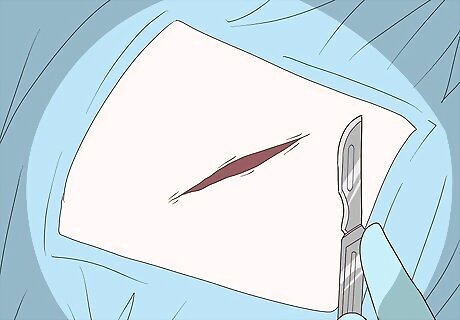
Undergo surgery for glass shard removal if it’s deeply embedded. In some situations, surgery may be required to remove glass from a wound, such as if it’s deeply embedded in the skin or muscle. The surgeon can make an incision from the point where the glass entered to better access it. They can also use a surgical clamp to spread apart the tissues if needed and grasp the glass using forceps. Then, they will stop any bleeding and close the wound with stitches. Keep in mind that if surgery is required, you will be given a local or general anesthetic so that you won’t feel anything during the procedure.

















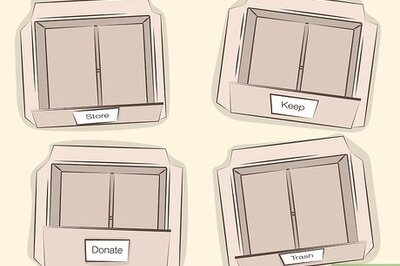

Comments
0 comment